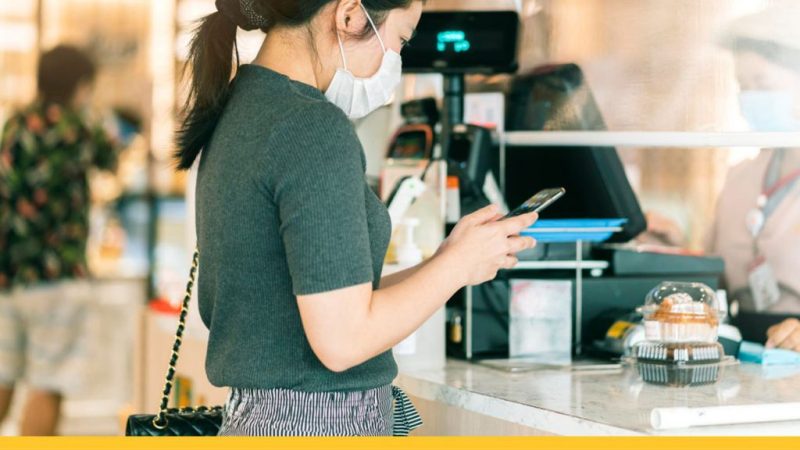In today’s competitive retail and service landscape, customer experience is everything. One of the most effective yet underutilized tools for improving it is POS feedback. But what exactly is POS feedback, and how can it help your business grow?
In this guide, we’ll break down the meaning of POS feedback, explore its benefits, and show you how to collect, analyze, and act on this valuable data to improve your operations, boost loyalty, and increase sales.
What Is POS Feedback?
POS feedback refers to customer input collected directly at the point of sale—the moment they complete a transaction. This can happen through:
- On-screen survey prompts on POS terminals
- Email or SMS receipts with feedback links
- In-app surveys (for mobile POS systems)
- QR codes on printed receipts
By gathering feedback while the shopping experience is still fresh, businesses can get real-time insights into service quality, product satisfaction, pricing perception, and employee performance.
Why Is POS Feedback Important?
POS feedback is essential because it captures authentic, timely customer sentiment. Here’s why it matters:
Real-Time Customer Insights
Get immediate feedback on shopping experience, checkout process, and satisfaction.
Quality Control
Identify product or service issues quickly before they impact more customers.
Employee Performance Tracking
Measure staff interactions and identify training needs.
Boost Retention and Loyalty
Listening to customers makes them feel valued, increasing repeat business.
Data-Driven Decisions
Use quantifiable data to improve store layout, pricing, or inventory management.
Types of POS Feedback Questions
To get the most out of your feedback system, ask the right questions:
Multiple Choice / Ratings:
- “How would you rate your experience today?” (1–5 stars)
- “How satisfied were you with the checkout process?”
Yes/No Questions:
- “Was the staff helpful?”
- “Did you find everything you were looking for?”
Open-Ended:
- “What could we do to improve your experience?”
- “Tell us what you liked about your visit.”
How to Collect POS Feedback Effectively
Use Integrated POS Survey Tools
Modern POS systems (e.g., Square, Toast, Clover) offer built-in or third-party survey plugins.
Keep Surveys Short
Limit questions to 3–5 per transaction. Short surveys improve participation.
Use Multiple Channels
Offer surveys through:
- Printed receipts with QR codes
- Email receipts with a feedback link
- Tablet kiosks at the exit
Offer Incentives
Small rewards like discounts, loyalty points, or a chance to win a gift card can dramatically boost response rates.
How to Analyze POS Feedback
Once you’ve collected feedback, follow these steps:
Categorize Responses
Group feedback into themes: customer service, product quality, pricing, etc.
Identify Trends
Look for patterns in complaints or praise. For example, frequent mentions of slow service might point to understaffing.
Flag Urgent Issues
Respond to negative feedback quickly to prevent churn and negative reviews.
Feed into Strategy
Use insights to inform:
- Employee training programs
- Inventory decisions
- Promotions and pricing
POS Feedback Tools and Platforms
Some of the best tools for collecting and analyzing POS feedback include:
| Tool | Best For | Key Features |
| Square Feedback | Small retailers & restaurants | Built-in post-transaction survey prompts |
| Toast POS | Restaurants & cafes | Customer feedback with performance reports |
| SurveyMonkey POS | Custom survey integration | QR-based feedback forms |
| NiceJob | Review collection & social proof | Post-sale surveys with Google review boosts |
| Delighted by Qualtrics | Enterprise-level feedback | NPS, CSAT, CES surveys with POS integration |
POS Feedback Best Practices
- Act quickly on negative feedback
- A/B test different survey formats
- Use feedback loops to close the loop with customers (e.g., “Thanks for your suggestion—we implemented it!”)
- Train staff based on recurring feedback themes
- Segment feedback by location, time, or staff for granular insights
Benefits of Using POS Feedback Strategically
- Improves customer retention
Reduces negative online reviews
Encourages operational improvements
Provides ROI on marketing and promotions
Helps you stand out from competitors
Conclusion
POS feedback is one of the most powerful tools available to businesses looking to enhance the customer experience, optimize operations, and build loyalty. By collecting and acting on real-time customer insights, companies can identify what’s working, fix what’s not, and continuously evolve to meet expectations.
If you’re not using POS feedback yet, now is the time to start. The data is already at your fingertips—you just need to listen.
FAQs
1. What is POS feedback?
POS feedback is customer input collected at the point of sale, typically via surveys, to evaluate their shopping or service experience.
2. How is POS feedback different from online reviews?
POS feedback is usually private, direct, and immediate, while online reviews are public and often delayed.
3. Can I integrate POS feedback into my loyalty program?
Yes. Many systems allow you to offer loyalty points or rewards in exchange for completing feedback surveys.
4. What types of businesses should use POS feedback?
Retailers, restaurants, service providers, salons, and any business with a physical checkout process can benefit from POS feedback.
5. How do I encourage customers to give feedback at POS?
Keep it short, offer incentives, and make it mobile-friendly using QR codes or receipt links.
Also read: I Go International: Your Gateway to Global Opportunities









